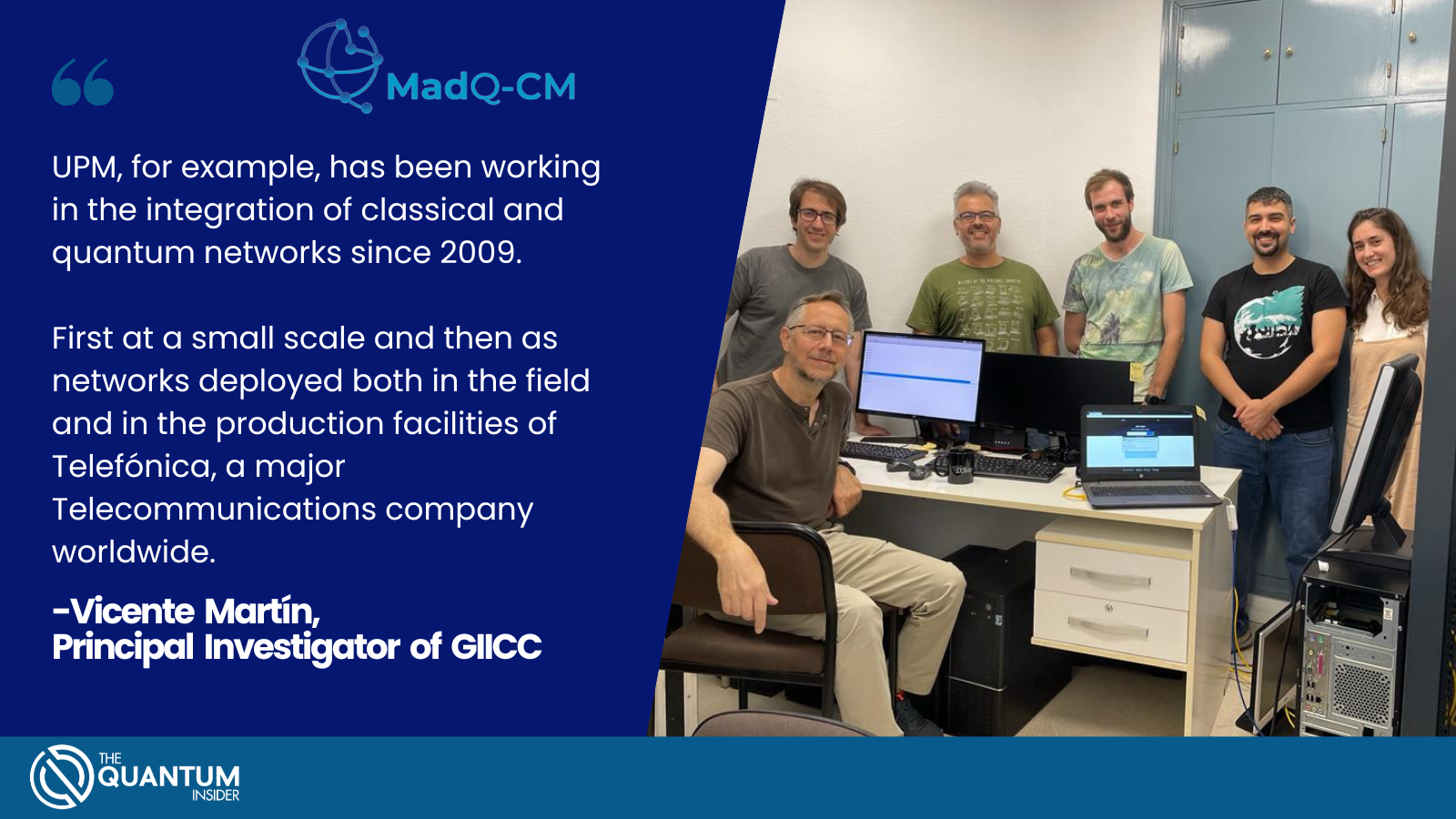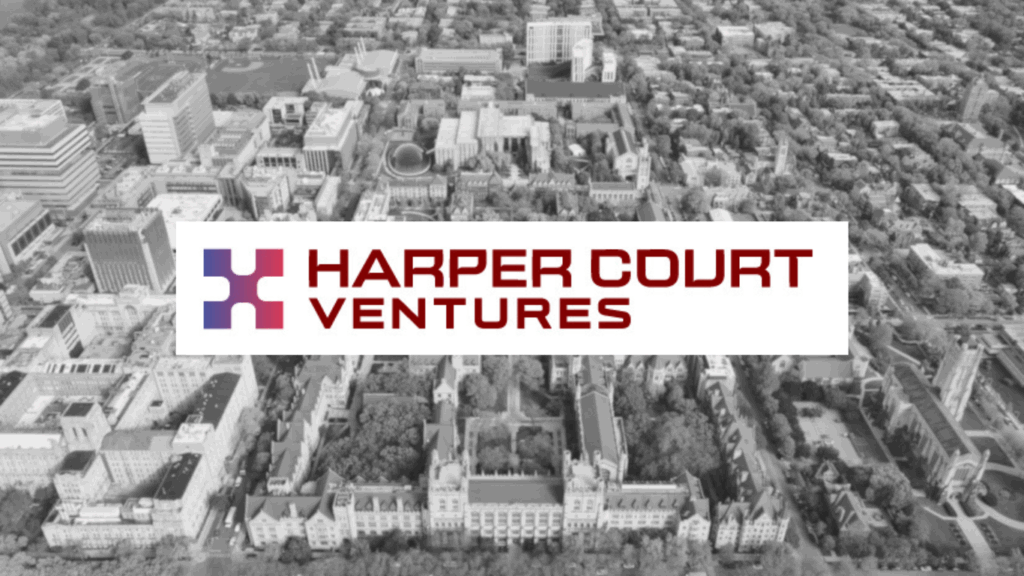As Europe looks to strengthen its case as a global leader in critical quantum technologies, the Polytechnic University of Madrid (UPM) took part in a demonstration that shows the university is at the forefront of quantum communication technology development. This demonstration is the most recent example of UPM’s spearheading leadership in quantum communication. And its research leaders reassure: quantum communications may one day provide European citizens with the ability to communicate and complete transactions, with an unprecedented, quantum-proof level of security. .
During the recent “Digital Assembly” event, jointly organized by the Swedish Presidency of the Council of the European Union and the European Commission, the university working together with European quantum and security companies showcased the development of a groundbreaking software-defined networking (SDN) framework for an ultra-secure video conference demonstration.
The advance is at the technological heart of developing secure quantum communications, commented Dr. Vicente Martín Ayuso, Principal Investigator of the Quantum Information and Computing Research Group (GIICC), Director of the Center for Computing Simulation (UPM) , and coordinator of the Spanish national plan on quantum communications.
“Quantum communications have garnered significant interest from businesses and organizations due to their unparalleled security features,” said Vicente Martín. “In an era where cyber threats are becoming more sophisticated, traditional encryption methods are increasingly vulnerable. Quantum communications leverage the principles of quantum mechanics to provide an unprecedented level of security by encoding information in quantum states. This makes it virtually impossible for any unauthorized party to intercept or tamper with the transmitted data without detection.”

The live-streamed video conference, which took place on June 15 in Stockholm, featured representatives from prominent European organizations. The transmission was protected by cutting-edge technology based on quantum communication, leveraging the unique properties of quantum mechanics to achieve unprecedented levels of security. Through a process called “quantum key distribution,” data transmitted during the video conference was impervious to any interception or decryption attempt, even from quantum computers.
UPM’s Legacy of Leadership in Quantum Communications Research
This demonstration highlights UPM’s long history of leadership in quantum communications technologies, specifically, but it also draws attention to Europe’s overall leadership in creating indigenous technology, while emphasizing an ability to forge strong cross-border collaborations within the continent, according to Vicente Martín.
From prototypes to real networks: integrating classical and quantum
“UPM, for example, has been working in the integration of classical and quantum networks since 2009,” said Vicente Martín. “First at a small scale and then as networks deployed both in the field and in the production facilities of Telefónica, a major Telecommunications company worldwide. The technologies used, not only from the quantum key distribution – QKD – side, but also from the network side, have evolved much and we have created what could be considered as the “brains” of a quantum communications network. We have done it also in a way in which it can be integrated in standard telecommunications networks, using as much as possible technology that mixes well with what is being used nowadays in optical communications.”
UPM’s pivotal role in the demonstration comes not only from their extensive expertise but also in their contribution to the network design itself. UPM researchers have developed a novel SDN-based software capable of managing all network elements, including quantum communication devices, encryptors and applications, with seamless transparency and a high level of security for users.
Looking into the future: interoperability needs to be at the heart of a quantum communication infrastructure
The software’s primary purpose is to enable the creation of complex quantum networks and facilitate the integration of various devices from different industrial providers. This capability is essential for quantum communication, a technology still in its early stages, with advancements, patents and commercial products emerging from diverse regions worldwide, each with its own language and specifications.
The deployment of UPM’s SDN-based technology over production network infrastructures offers versatility and heterogeneity, making the Madrid quantum network, coordinated by UPM, a prominent reference in the field of quantum communications. This software played a crucial role during the Digital Assembly demonstration, ensuring interoperability among the European providers participating in the simulated pan-European “network” connecting the main stage of the event and the quantum booth.
“The demonstration follows the long-term view of Europe, as represented by the European Quantum Flagship and European Quantum Communications Infrastructure programs,” said Vicente Martín. “The first intends to develop the technology – not only for quantum communications – and the second will deploy the technology developed in the first, along with the many others needed to provide a large-scale ultra-secure quantum communications infrastructure connecting all of Europe. We are now in the first stages, however, we are already able to show how several manufacturers from Europe can cooperate to deliver services that might be routine in the final EuroQCI.”
Managing complex collaborations is a requirement for groups building complex quantum ecosystems. This demonstration offers evidence that these European partnerships are possible. Besides the SDN framework developed by UPM, the connection relies on two pairs of quantum devices supplied by QTI (Italy) and LuxQuanta (Spain), which form the quantum layer of the infrastructure. These devices establish secure quantum keys, ensuring the highest level of protection for communication. Additional support was provided by Ericsson (Sweden), KTH in Stockholm,TELSY (Italy) and the PETRUS consortium, led by Deutsche Telekom and composed of Airbus, the Austrian Institute of Technology, and Thales SIX. This collaborative effort encompasses various European projects and initiatives, including EuroQCI-Spain, QUARTER (Spain), NQCIS (Sweden), EQUO (Italy), SEQRET (Germany), and QSNP, an initiative of the Quantum Flagship.
Europe’s Quantum Network Catalyst
The success of demonstrations such as the one performed at the Digital Assembly event, put the spotlight on the reliability of EU-based quantum communications initiatives, such as UPM-led “MadQCI”, the Madrid Quantum Communication Infrastructure. Which, in its fourth generation already, serves as the technological cornerstone for an ever-growing, increasingly sophisticated, super-secure quantum communications network. It is a one-of-a-kind quantum network that continues to help spawn real world applications, and was developed with participation with industrial partners, such as Telefónica.
MadQCI relies on shared quantum and classical infrastructure, including optical fiber, to support potential use cases such as network security, critical infrastructure protection and e-health services.
UPM’s groundbreaking research in quantum communications has paved the way for the development of these four generations of MadQCI’s cutting-edge status, according to university leadership. This innovative network has garnered renewed attention and support from various EU-focused initiatives and national investments, positioning it as a key player in the future EuroQCI project.
The implications of this achievement extend beyond the technical realm, as it opens up new avenues for collaboration and business prospects. By actively contributing to the growth of the network, UPM aims to foster a thriving business ecosystem in the quantum communications sector, catalyzing further advancements in this transformative field. As this network of innovators and entrepreneurs expands, MadQCI can serve as the central hub of a unique ecosystem centered around quantum security. Plans are currently underway to develop a quantum communications incubator that will nourish and support new talent within this ecosystem.
Lastly, as finding and nurturing talent poses a significant challenge in the quantum technology industry, MadQCI will establish a talent pipeline to provide the necessary “people power” to drive forward this quantum revolution.
The roots of MadQCI, then, serves as a cornerstone for what eventually will become EuroQCI, said Vicente Martín. New partners will join for the next generation of MadQCI.
“What we are setting up in this demonstration is a ‘Mini EuroQCI’ made with European components and includes all the necessary elements for a true Quantum Network,” said Vicente Martín, live at the Digital Assembly’s quantum session.
Europe and The Future of Quantum
Zooming out for the big picture shows that the video conferencing demonstration is a single – but important – step toward a much more broad – and bold – vision of the quantum era in Europe, one that UPM has nurtured.
The collaborative efforts among UPM and European institutions and companies in this project not only bolster Spain’s strategic position, but also strengthen Europe’s stance in the competitive quantum cybersecurity race. UPM’s active participation, alongside Italian, Spanish, German and Swedish companies, among others, highlights its pivotal role as a driving force in the development of a reliable, functioning, quantum communication infrastructure.
These cutting-edge developments have garnered UPM, amongst other Spanish institutions, significant new investments to jointly co-develop quantum technologies, channeled through the National Program of Complementary Actions in Quantum Communication, coordinated by UPM, and their active participation in both the European Quantum Flagship and EuroQCI programmes. These initiatives collectively aim to establish Europe as a network of research hubs for quantum security innovation. And certainly Spain, in the long-term, as the South European cyber and security hub.
Throughout this demonstration, Europe has made a step forward, showing that the vision of the EuroQCI – a novel cyber secure, quantum-proof communications infrastructure – is possible. And that, through these collective efforts, privacy may have a way: the EU way.
In this framework, UPM’s scientific prowess and joint undertakings hope to, in the mid to long term, help both governments and citizens revolutionize the way they communicate and share their data. Using quantum-proof secure networks, and keeping their information and privacy in safe ground.
For more market insights, check out our latest quantum computing news here.
















